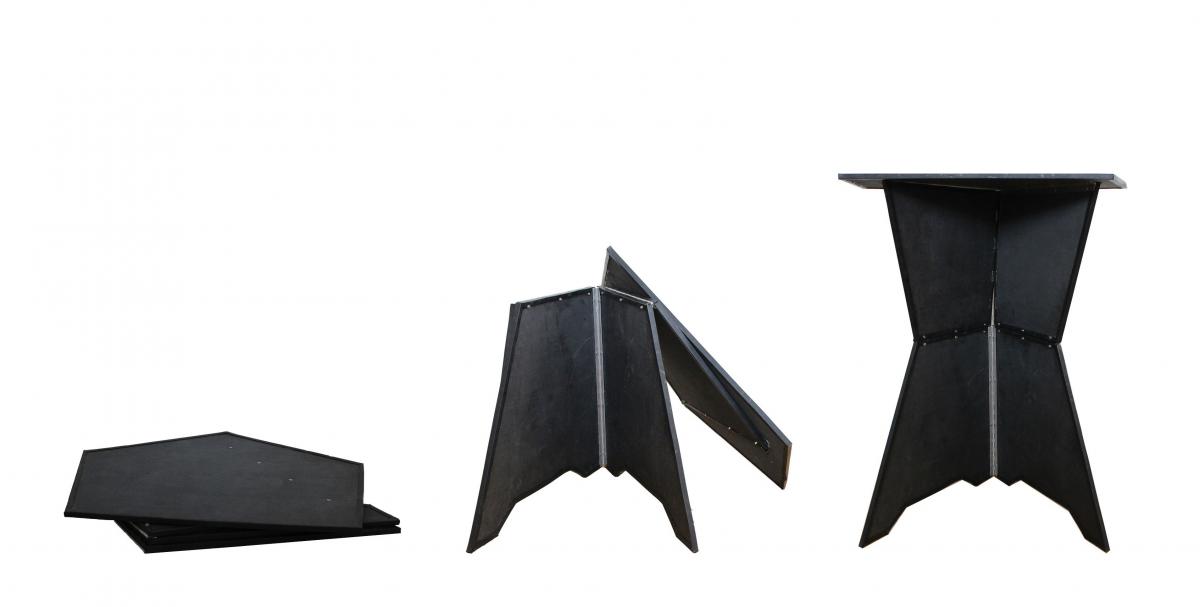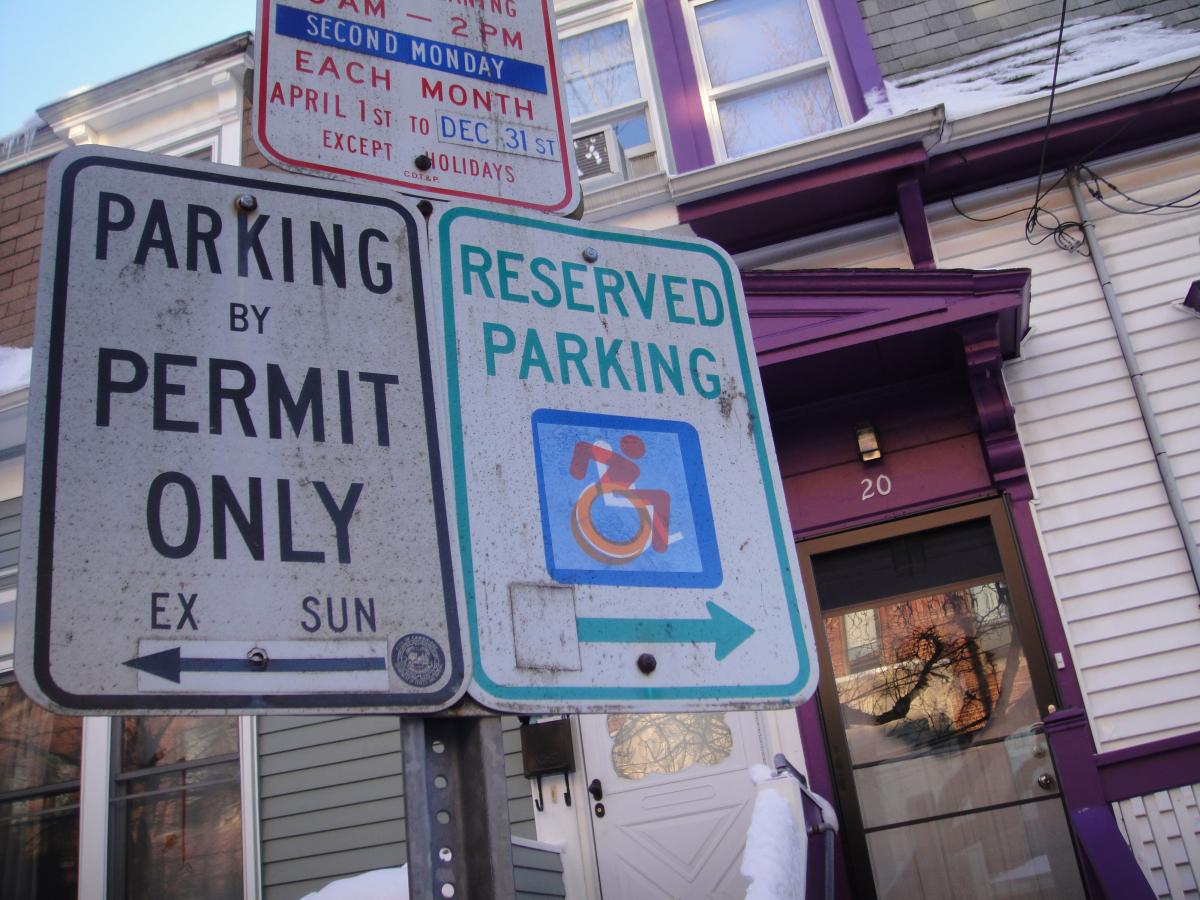In 2005, Sara Hendren took a four-week class in Pasadena titled “Get Your S— Together.” It was a crash course on skills such as creating a website and doing taxes. A trained visual artist, she had recently dropped out of a doctoral program in cultural history and turned her attention back to making paintings and showing in galleries. She was also newly pregnant with her first child.
The instructor of the class asked students to write their own professional obituaries. Hendren wrote about a career devoted to creating art collections that would be shown in galleries she admired. But when she completed the assignment, she felt unsettled. She realized, she said, that “even if all that dream stuff came true—that’s not why I was in this field.” She was at an inflection point and sensed a frontier beyond fine arts that she wanted to explore. So she rewrote the obituary. She imagined a life in which she worked in a media lab in collaboration with Mass General Hospital—a career that merged technology, art, and the health and well-being of humans.
The exercise of the obituary foretold more than Hendren could have guessed. Today, she is a professor at the Olin College of Engineering and the author of What Can a Body Do? How We Meet the Built World. Her research and projects focus primarily on social design and the politics of disability. In her lab at Olin, she and her students have built things such as a ramp for wheelchair dancing and a lectern for a little person—personalized designs that suit a particular situation while simultaneously raising questions about the standardized dimensions of any space. These are exactly the sorts of projects Hendren loves. “If you squint at that obituary I wrote in 2005, it looks like I was destined for a career in an engineering school,” she told me. “But I never would have thought that at the time.”
Before her professorship at Olin, Hendren’s life took various twists. “I’ve told my students that though my career looks quite tidy, every five years have in fact been weirdly different,” she said. She had three children before receiving her MA in design studies from the Harvard Graduate School of Design. Her oldest son, Graham, was diagnosed with Down syndrome shortly after his birth. In the introduction to her book, Hendren writes of her weekly visits with Graham to a physical therapy gymnasium, and how the “riot of gadgetry” inside it began to pose a question to her: What can a body do?
This question went on to shape her research and become the title of her book. In What Can a Body Do?, she writes, “Nothing about engineering is my natural language, but I have . . . [made] peace with an outsider-insider place, earning a slow and hard-won expertise.” This unique position makes her the ideal guide for the layman into the realm of assistive technology and design. What Can a Body Do? throws into question everything about the built world—the spaces and objects humans have created, and why we tend to consider spaces and objects assistive only when they are designed for people who are disabled. After reading a few pages, it’s hard not to look up and see your surroundings in a different light.
“What is any technology doing, any tool, any implement, if not offering assistance?” Hendren asks. “It is the very nature of all of our stuff to give us help.” She points to eyeglasses, silverware, a plastic arm that throws a ball for a dog. And she cites with appreciation that the term “disabled” is not a derisive term, but an apt description of how disabled people must adapt their bodies to meet the built environment—from a little person who must drag out a stool to stand at a lectern designed for a nondisabled person to a quadruple amputee who prefers using cable ties to open her kitchen drawers instead of a specialized myoelectric arm. “Who is the world built for?” Hendren asks. The answer is far from simple.
Hendren ties her research to stories about people whose bodies are in a “misfit” relationship with the world in some way. Hendren’s use of the term “misfit” comes from disability scholar Rosemarie Garland-Thomson. She writes, “It’s a deceptively casual word, even something like slang. Misfitting provides a bracing shorthand to stand for all kinds of bodies in a clash with the built environment—the obvious clashes and the quieter ones, hiding in plain sight.” The “misfit states” of Hendren’s subjects vary widely: from a man with a cyborg arm to a young man with autism to dementia patients, just to name a few.
Hendren organizes each chapter around an object or environment. For example, chapter three, titled “Chair,” describes affordable, specially designed chairs and other furniture made out of cardboard by the Adaptive Design Association for children with disabilities. The lens then widens, and the chapter delves into how chairs became a part of our everyday lives. Before Western industrialization, only the wealthy and powerful owned chairs. And the general design of a chair runs counter to the ideal posture for bodies in the long term. Yet, Hendren writes, “the industrialized body has devolved in its needs and succumbed to chairs.” If you’re reading the book while sitting in a chair, you may begin to notice an ache in your lower back in a way you hadn’t before.
Another chapter, titled “Room,” describes the DeafSpace architecture of Gallaudet University. Hendren describes features like wooden benches, which transfer attention-grabbing taps between deaf or hard-of-hearing students with better percussion than taps made on cement or metal. She notes long sight lines and extra-wide sliding doors, designed so that two or more people speaking in sign language can walk through without interruption. And the walls are painted sky blue, a color choice that provides the most contrast for a variety of skin tones, and thus the highest clarity for hands engaging in sign. Hendren shows how the design of the space is based on years of research on the optimal surroundings for deaf or hard-of-hearing students. “DeafSpace isn’t a plea to ‘make room’ for deafness,” she writes. “It’s an unapologetic and joyous expression of the integrity and beauty of deaf experience.”
“Design is the product of human intention,” Hendren told me. And throughout her book, she makes clear that the settings we all live in and interact with—from dorm rooms to nursing homes to city streets that feature curb cuts—are the product of human decisions. Who are these decisions based on? And how do those decisions affect us all, the nondisabled and the disabled?
Hendren and her husband learned of Graham’s Down syndrome diagnosis in the first weeks of his life. She writes that the most painful dissonance in those early days was how Graham “became the diagnosis” to those outside the family’s close circle, even as she and her husband were continuing to get to know and adore him as the newborn they’d eagerly welcomed into the world. She writes, “There’s no other way to put it: on a Tuesday he was a singular human, the likes of which the planet had never seen before, and on Wednesday, somehow, he transformed in the eyes of others into a type, a kind of person now defined by statistical risks and telltale physical features.”
Hendren described to me the “slow release capsule of anger” she has lived with because the world is not arranged for people like Graham. She has channeled this anger effectively into a productive force. One of her most daring projects, for example, is the Accessible Icon Project, which she classifies as “design activism”—a way to use design to provoke political debate. Working with a partner, Hendren created a new design for the blue-and-white icons that designate so-called “handicapped” parking spaces and other accessible facilities—this one showing a figure in motion, leaning forward in a wheelchair. She and her partner began applying clear-backed stickers of the new icon over the old icon all around Boston—guerrilla activism with the aim of posing a question Hendren wants everyone to be thinking about: Who has access?
To people unfamiliar with disability, there’s a tendency toward a sentimental view that is laden “with swelling piano music in the background,” Hendren told me. Parents of disabled children are often labeled heroes or told that they’re strong. This adulation can add to the loneliness they may already be feeling. “Your world can get small,” she told me.
When Hendren felt things closing in, what she needed to hear was that she was part of a much larger story—one about the infinite life experiences that exist in this universe. Down syndrome is a part of this universe, just as deafness is a part of this universe, just as losing a limb when you’re fifty is a part of this universe, and so on. Perhaps the most startling and refreshing aspect of both Hendren and her book is the genuine interest and curiosity that she brings to her subject. In a society so often fueled by anger and frustrations, Hendren prefers to pause and take a close look at what’s in front of her. “Your sense of wonder has to be engaged to sustain real change,” she told me. And the questions she asks, both in her research and her designs, spark a contagious curiosity.





